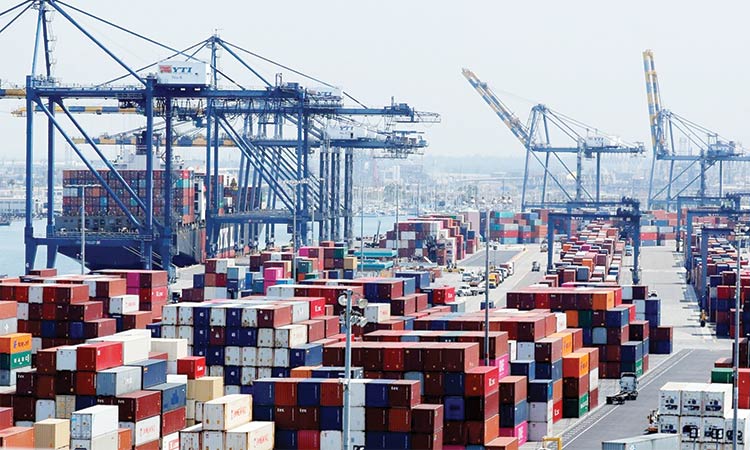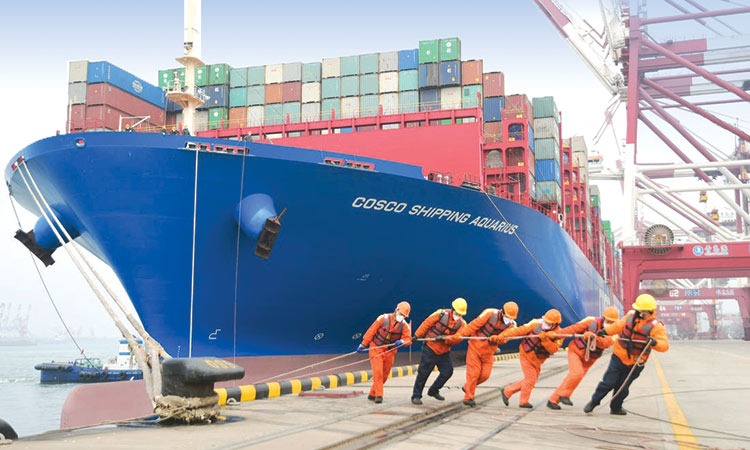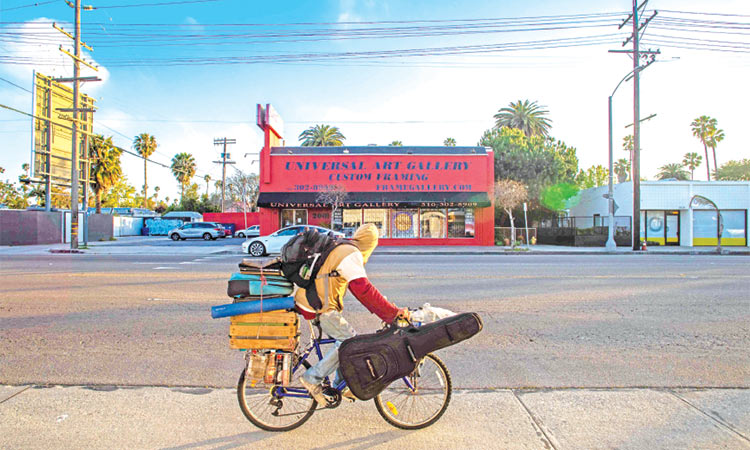A trade war could tip the US economy into recession

Ship and containers are shown at the port of Los Angeles. Reuters / File
And US President Donald Trump’s latest decision to hike tariff rates on Chinese goods has possibly brought that risk a bit closer. At least the bond market seems to think so − the yield on three-month US Treasury bills has just risen above 10-year yields for the second time in a week.
A sustained curve inversion, as such a shift is called, would be seen as a sure-fire recession signal; in a normally growing economy, longer-dated borrowing costs are higher than short-term rates.
But the curve has sent a false alarm at least once before and some believe it is doing so again, above all because huge Fed purchases have depressed longer yields. Huge issuance of short-term debt is also likely to have contributed to the flattening.
Which brings us to another question. Given 2019 net borrowing will top $1 trillion, might Washington find itself scrambling to find buyers? Some dismal bond auctions recently have raised the question whether China is paring Treasury purchases − due to the escalating trade spat. Simmering tensions will keep the issue alive.
What is an inverted yield curve -Flattened yield curve reason to be nervous, but US economy solid - Fed’s Evans -US yields spike after dismal 10-year note sale.
Industrial output, retail sales, house prices: a batch of data due in coming days was supposed to give investors an idea about how China’s economy was faring against a backdrop of 10 per cent US tariffs and authorities’ stimulus policies.
Fast forward and the stakes have been raised − quite a lot. On Friday, Washington hiked tariffs on $200 billion worth of Chinese goods to 25% and Trump, reverting to Twitter, has threatened more. Beijing warned it would retaliate, though it didn’t say how.
Negotiations to try to end a 10-month-old trade war between the world’s biggest economies are continuing, and markets have taken heart from China’s decision to stick with the talks. Another factor is China’s central bank, which assured markets it had “rich” policy tools to cope with external uncertainties. Weak economic data can only cement that resolve. Trump’s tariff hike on $200 bln of Chinese goods takes effect -More China policy easing seen as lending slows, trade risks rise -Counting the cost of the US-China trade war so far.
The world economy seems to be shifting into a lower gear but Brent crude futures are holding above $70 a barrel, up 30% this year. Barclays sees a climb to $74-$75 in the coming year.
In the short-term too, oil looks well-supported. On the demand side, Chinese imports hit a record in April, possibly due to economic stimulus measures taking effect. And supply has been curtailed by a pipeline contamination issue in Russia and US sanctions that have cut shipments from Venezuela and Iran.
Venezuelan exports have dropped 40 per cent since January and Iran’s exports have more than halved, to one million barrels per day or less. They are expected to slide further in May.
None of these issues will be resolved anytime soon. Iran for one is threatening to retaliate against US sanctions by breaching a nuclear pact signed in 2015. Sanctions have failed to dislodge Venezuelan President Nicolas Maduro but they are likely to cut oil exports further in May, after the expiry of an April 28 deadline for US firms to complete existing deals.
US sanctions and Venezuela’s exports and imports -OPEC supply squeeze seen supporting higher oil prices -Sinopec, CNPC skip Iran oil purchases for May to avoid US sanctions.
Few US data series have been as choppy in recent months as retail sales. December’s drop in core sales was the largest in nearly two decades − only to be followed by an equally large swing to the upside in January. Demand for big-ticket items like cars then pushed the March total to the highest in 18 months.
Consumer resilience, emboldened by a strong job market, was a key pillar of support for the US economy in the first quarter. So the April reading will show if that willingness to spend continues into Q2.
Reuters estimates point to the first back-to-back rise in retail sales since November. Headline sales are seen up 0.2 per cent.
The report comes soon after Trump imposed new tariffs on $200 billion of Chinese imports, but it is far too soon to see a meaningful impact from the trade war between the world’s two largest economies. Shoppers will probably not start reacting to sticker shock until the third quarter.
Reuters







